Current Protein Promotional Environment at Retail
July 12, 2021
Some of the greatest tools that retail stores possess to drive consumer demand include various promotional incentives, such as circulating advertisements or digital circulars featuring items, displaying items in prominent positions or with signage in the stores, coupons, and markdowns. These different promotions help draw shoppers’ attention to store departments and the fresh meat department is no exception. In 2020, the fresh meat department sold 37% of dollars and 40% of volume with one form of promotion or another attached to the item.1 This article will focus generally on the featuring of items at the retail level, as this is the most prominent and popular way to showcase various products within the industry.
The various definitions of promotional items include featuring items, which includes products featured in circulars (digital or print) or displaying items in high-traffic areas inside the retail store to attract consumer dollars. Fresh beef is a common item for the retail store to feature in different advertisements and is frequently featured on the front-page of circulated newspapers or digital circulars from retail stores; in fact, beef is such a commonly featured item that 56% of all featured dollars sold were derived from some type of beef feature in 2020.2 Comparing beef to other proteins, one can see that beef has outperformed chicken and in terms of featured dollars sold; in 2020, chicken totaled 25% of featured dollars, while pork totaled 11%.3 Beef is a very popular item with consumers at the retail level and featuring this protein will help increase the amount of sales generated and attract shoppers to the store.
Examining the specific types of beef products featured in the retail sector, ground beef is by far the most popular item to feature. In 2019, $1.1 billion of beef sales (4.3% of all beef sales) were generated by ground beef that was featured, but given the retail environment experienced in 2020, dollars sold on feature dropped 26.5% year over year.4 On a volume basis, 332 million pounds of featured ground beef were sold, which is 6.2% of all beef volume sold, and this metric dropped 31% year over year.5 One interesting dynamic in the retail industry over the past year was the significant increase in sales of ground beef; this proved to be a staple in consumers’ diets as they shifted to “stay-at-home” behavior. Due to this, the necessity of featuring ground beef dropped as demonstrated by the year over year decrease in ground beef featuring compared to other beef products, particularly steaks. In 2019, steaks sold $9 billion dollars’ worth of product, with 11% of those sales coming from steaks that were featured by the retail industry.6 Due to the increased prevalence of shoppers at the retail industry in 2020, sales for steaks increased $2.5 billion annually.7 Like ground beef, steaks did experience a decrease in the share of products sold under promotion, but it was significantly less than almost every other beef product; featured steak value only decreased 4.6%, outperforming the total beef market which experienced a 15.4% drop in share of featured products sold.8 While most products did experience a decrease in the prevalence of featuring year over year, Brisket, even though it isn’t featured as much as other beef products, actually increased its featured volume sold on a percentage basis.9
Looking at the 2020 United States Department of Agriculture data, 65% of retail stores participated in some type of beef featuring promotion on average, while in 2019 this data was reported at 81%.10 This would suggest that during the period of pandemic-driven demand, some retailers reduced the amount of featuring for some fresh beef items, but the most popular stores consistently promoted beef. This is evidenced by the increase in dollars and volume sold for beef, even though the actual number of physical stores featuring the items decreased. Examining chicken, an average of 65% of retail stores were featuring chicken products.10 Pork, on the other hand, has a fairly high feature penetration rate, with 75% of stores featuring pork in 2020, while in 2020 it experienced an 86% penetration rate.10 While there was a decrease in penetration rate for all proteins in terms of retail featuring, beef has a higher consumer conversion rate than other proteins; therefore, the data suggests that featuring beef at the retail store is more likely to lead to a sale than other protein.11
The retail industry has overcome major obstacles and benefited from the rapidly changing food environment over the past 15 months – one thing that has remained unchanged is the benefit retail stores derive from showcasing, featuring, and displaying one of the most important products found in a grocery store: fresh meat. The benefit of promoting beef is clear – when beef is present in the consumer basket, the value of that basket increases 240% compared to when it is absent.11 This will lead to higher retail sales, which benefit the outlet and the beef industry
- NielsenIQ, Answers on Demand, Retail Protein Promotional Sales, Data Ending December 2020, Processed 6/22/2021. Formula: All 2020 Fresh Meat Sales on Promotion divided by Total 2020 Fresh Meat Department Sales
- NielsenIQ, Answers on Demand, Retail Protein Promotional Sales, Data Ending December 2020, Processed 6/22/2021. Formula: All 2020 Fresh Beef Sales w/ Feature Dollars divided by All 2020 Fresh Meat Sales w/ Feature Dollars
- NielsenIQ, Answers on Demand, Retail Protein Promotional Sales, Data Ending December 2020, Processed 6/22/2021. Formula: All 2020 Fresh Chicken and Pork Sales w/ Feature Dollars divided by All 2020 Fresh Meat Sales w/ Feature Dollars
- NielsenIQ, Answers on Demand, Retail Protein Promotional Sales, Data Ending December 2020, Processed 6/22/2021. Formula: All 2019 and 2020 Fresh Beef Sales w/ Feature Dollars divided by All 2019 and 2020 Fresh Meat Sales w/ Feature Dollars
- NielsenIQ, Answers on Demand, Retail Protein Promotional Sales, Data Ending December 2020, Processed 6/22/2021. Formula: All 2019 and 2020 Fresh Ground Beef Sales w/ Feature Pounds divided by All 2019 and 2020 Fresh Beef Sales w/ Feature Pounds
- NielsenIQ, Answers on Demand, Retail Protein Promotional Sales, Data Ending December 2020, Processed 6/22/2021. Formula: All 2019 Fresh Beef Steak Sales w/ Feature Dollars divided by All 2019 Fresh Steak Sales Dollars
- NielsenIQ, Answers on Demand, Retail Protein Promotional Sales, Data Ending December 2020, Processed 6/22/2021. Formula: All 2020 Fresh Steak Dollar Sales subtracting All 2019 Fresh Steak Dollar Sales
- NielsenIQ, Answers on Demand, Retail Protein Promotional Sales, Data Ending December 2020, Processed 6/22/2021. Formula: All 2019 and 2020 Fresh Steak Sales w/ Feature Dollars divided by All 2019 and 2020 Fresh Steak Sales Dollars; All 2019 and 2020 Fresh Beef Sales w/ Feature Dollars divided by All 2019 and 2020 Fresh Beef Sales Dollars
- NielsenIQ, Answers on Demand, Retail Protein Promotional Sales, Data Ending December 2020, Processed 6/22/2021. Formula: All 2019 and 2020 Fresh Steak Sales w/ Feature Dollars divided by All 2019 and 2020 Fresh Beef Sales Dollars
- Agricultural Marketing Service, USDA Market News, Weekly Retail Advertisement Prices, Data Ending 12/25/2020
- NielsenIQ, NCBA Homescan Panel, Understand the Buyers of Fresh Meat, June 2021
NielsenIQ Explainer: Syndicated, retail scanner data provider to NCBA, a contractor to the Beef Checkoff, which allows licensed access. Nielsen collects information on millions of unique item purchases across the marketplace through sales transactions captured during the checkout process. This information is uploaded into an online database, in which only those with a license can access it. We utilize and analyze data found in the database by querying things such as volume, value, market penetration by various characteristics, such as protein type, cut, and time frame comparisons.
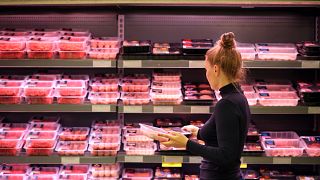
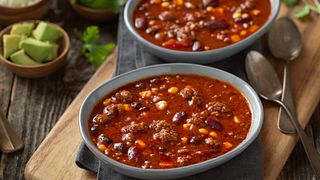

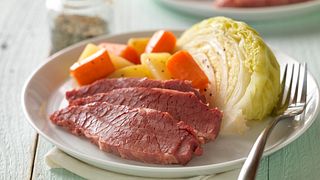
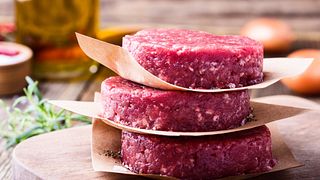

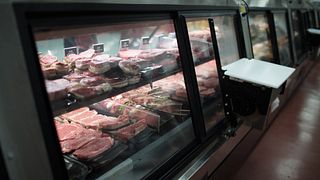
.jpeg?keep=c&u=nvwl20)